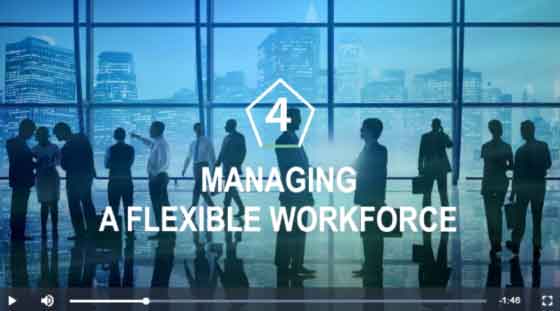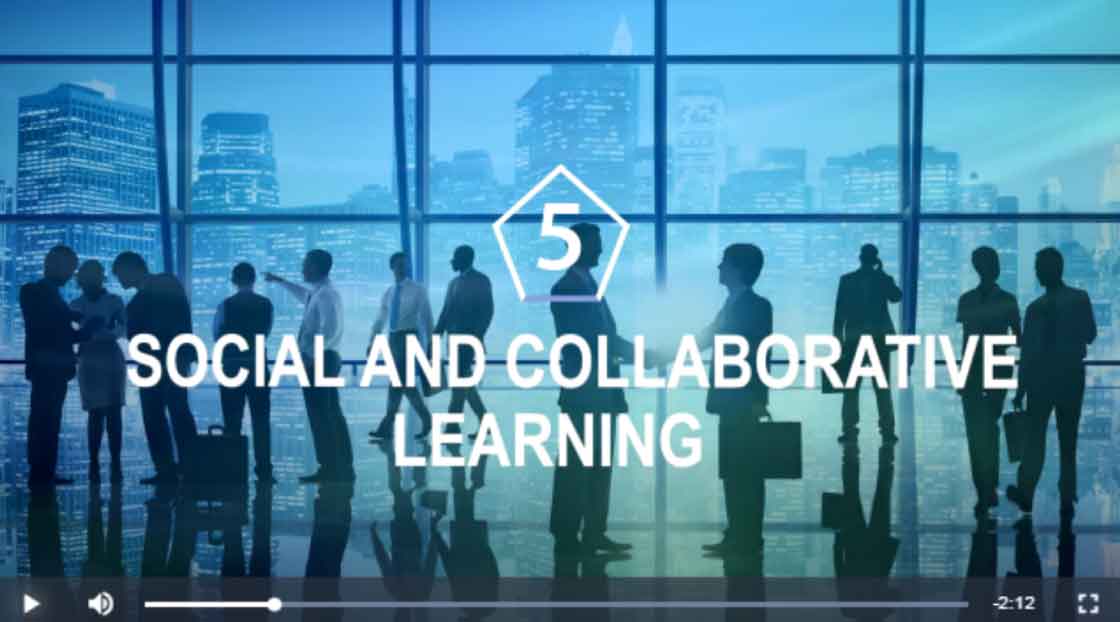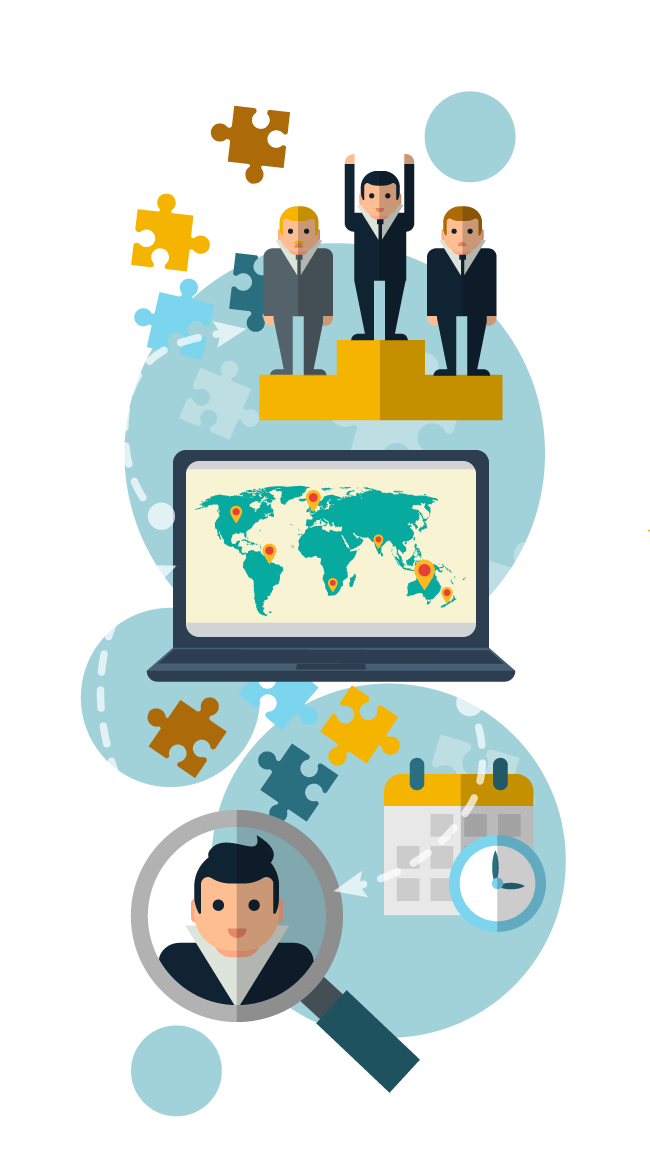


Far from just a big business challenge, IDC defines digital transformation as the application of digital technologies that fundamentally impact all aspects of business and society as a whole. In this respect, digital transformation touches all organizations, their customers, and fundamentally their employees.
By failing to address digital technologies, your organization could become less competitive. More importantly, you could start to lose talented employees and become less successful in attracting new ones. Digital transformation is also the source of new ideas, business models, and ways of working. It has the potential to reengage employees, management, and customers through new methods and tools.
Digital transformation has the potential to reinvigorate the HR functions, freeing up more of your time to concentrate on delivering value to the business, rather than managing requests. Around the world, small and medium-sized businesses are investing in resources to improve employee productivity and their competitive positions.
Far from an overnight solution, digital transformation and HR transformation are a journey that you can begin at any time using the skills and people you already have access to. This IDC interactive guide takes you on this journey, outlining the drivers and key aspects you need to consider. It also helps you understand where you should be heading and the kinds of challenges you can address through HR transformation. Critically, it shows you how digital will transform your own role.
Digital transformation is happening in more and more organizations, and small and medium businesses can not afford to ignore it. Critically for HR, the barriers to successful transformation are people, knowledge, and culture. Like it or not, the business will be looking to the HR department to support these initiatives and make this happen for the employee base.
24%
People
Our organization does not have enough people with digital skills
22%
Knowledge
We lack a sufficient understanding of what digital transformation is and who can help us
21%
Financial incentives
Our financial systems do not incentivise us to take the required risks for digital businesses
21%
Culture
Our organization does not have a risk-taking, innovation-driven culture
The fundamentals of digital transformation success will be based on HR transformation success.
Transformation of the workforce, and the way it is utilized, managed, and improved, is a central feature of this process. On top of everyday tasks and managing a team, many HR professionals will be tasked with keeping pace and delivering change.
This can only be achieved by HR helping to create an agile organization that meets the demands of the business, but also one that helps employees and managers become and remain engaged, productive, and focused. At the same time, HR must maintain a development path and training goals, and manage overall employee performance. This includes not only the talent you have, but also the talent you target. To achieve this, HR professionals must:
Drive HR transformation through a highly engaged workforce
Ensure HR becomes a central to delivering transformation and continuous change
Create an agile, flexible, and reactive organization, built on a collaborative culture
Develop, retain, and attract the right talent into and within the business
Ensure your HR processes begin with the employee, involve managers, and result in a highly engaged and collaborative workforce.
HR is central to delivering digital transformation, but very few HR leaders are heading this process … why?
This comes down to the traditional perception that HR professionals are less strategic and that their department (which may be under-resourced) does not possess the necessary skills or leverage within the business.
HR departments and HR leaders cannot afford to be seen as a process and policy driven section of the business. They must be seen as central to the business and demand a seat at the table.
Those leading digital transformation must be made aware of the "people" element, sooner rather than later …
Q. When choosing an external service provider in support of your digital transformation, which type of provider would you prefer to use for each of the following stages?
The process of digital transformation requires identification, availability, and access to the right talent. You cannot hire your way to transformation …

Strategic HR is the process of delivering HR based on wider business objectives and outcomes, rather than process or administrative requirements — the bigger picture as opposed to (or as well as) the everyday.
Within four years (2012-2016), there has been a significant increase in the number of organizations that implement a formal talent management strategy.
Now is the time to formalize your talent management strategy.
One of the first steps to delivering HR transformation is automating processes and streamlining everyday tasks and admin. From here, you can drive employee engagement, which is central to productivity and talent retention.
The shift in importance placed on HR priorities signals a change in focus and a migration away from administration and towards performance and talent management. This has to be supported by automation and self-service tools.
Very few organizations are addressing this. LOOK FOR QUICK WINS.
HR professionals need to break this vicious circle before it becomes a downward spiral. New tools and processes are one way to drive improved employee (and management) engagement, as well as streamline HR functions to enable a more strategic focus.

the best talent, into the best roles, with clear (and parallel) career development, as well as attracting employees from across deprtments.
talent across the organization, reskilling and retraining where possible, as well as empowering talent with the tools to enable this.
people, skills, and enagement by delivering opportunity and progression. Most critically, retain a highly engaged workforce.
talent, skills, and potential (future capability). Ensure that the human capital and knowledge capital of the business exceeds the sum of the parts.
 EMPOWERING HR ACROSS THE BUSINESS
EMPOWERING HR ACROSS THE BUSINESS
 IMPACTFUL HR DECISION MAKING
IMPACTFUL HR DECISION MAKING
 CONTINUOUS EMPLOYEE ENGAGEMENT
CONTINUOUS EMPLOYEE ENGAGEMENT
 MANAGING A FLEXIBLE WORKFORCE
MANAGING A FLEXIBLE WORKFORCE
 SOCIAL AND COLLABORATIVE LEARNING
SOCIAL AND COLLABORATIVE LEARNING
By addressing these initiatives, HR can deliver increased value but also gain time and insight to become more strategic and deliver increased value.
HR departments want a solution that frees up time from HR admin, allows for strategic inputs, and helps them deal with issues of planning, resourcing, and development.
Line-of-business managers want their staff to be engaged, with a high level of self-service, and to fulfill HR-related tasks with ease and on time.
Executives want to complete business transformation projects that will future proof their organizations. They care about efficiency, engagement, and productivity.
Employees want self-service, zero-hassle, easy-to-use HR tools that help them keep track of their KPIs, their development goals, and their prospective paths.
These fundamental target groups form the backbone of strategic HR initatives, therefore delivering change
Transform your HR role and that of your department from a keeper of records to a strategic business partner. This means becoming a driver of change, creator of efficiencies, and agent of growth and talent attraction. Use HR to guide your business transformation rather than just keeping score of the process. Freeing up your time is central to achieving this.
Enable your HR department to become more efficient, save time, and spend resources on securing better access to talent and higher employee engagement.
Start by automating some of the mundane and repetitive tasks your team has to perform on a daily basis. One way to address this is by focusing on employee and management self-service, such as web-based holiday requests, or access to HR policies online.
Rethink the skills your organization needs and how you can attract the best fit for open positions. Reevaluate your hiring process to ensure the best talent flow.
Think about automating training and development, so employees can self-learn and also teach each other. Personal development, will lead to more engaged employees and a happier workforce.
Make better use of analytics to identify why some employees leave. Find new ways to engage them and build policies around succession planning.
Empower your organization with a strong HR department that will foster your employer brand and raise your visibility in the market.
